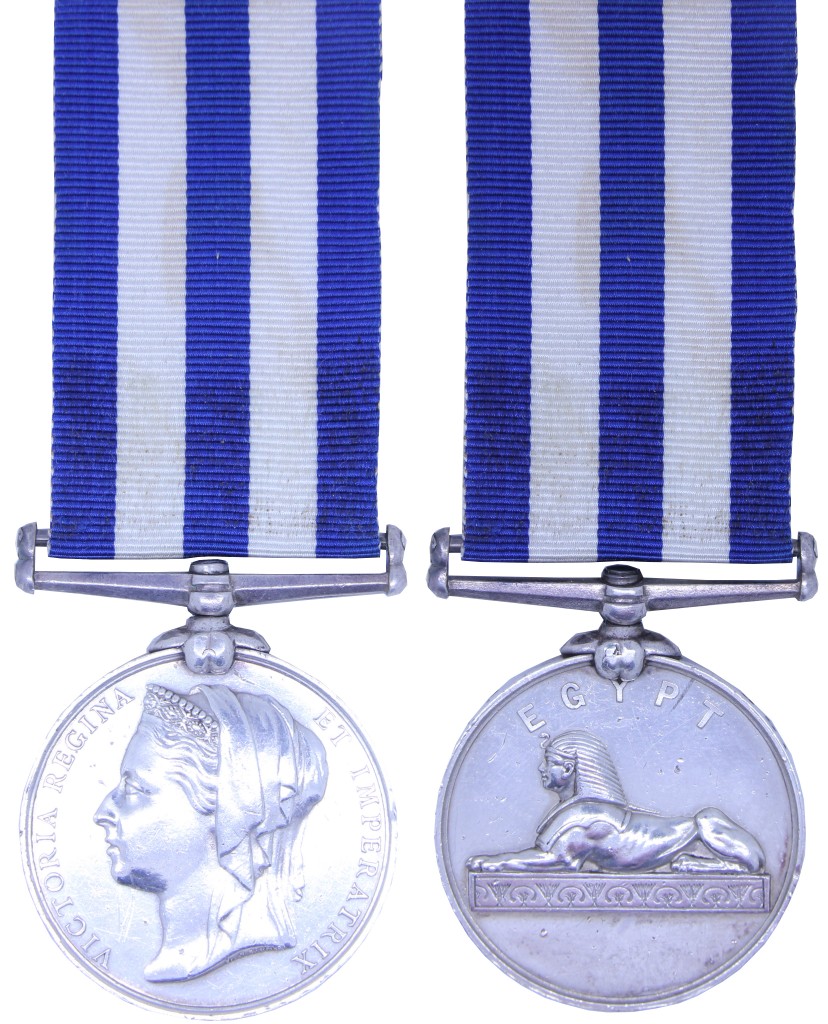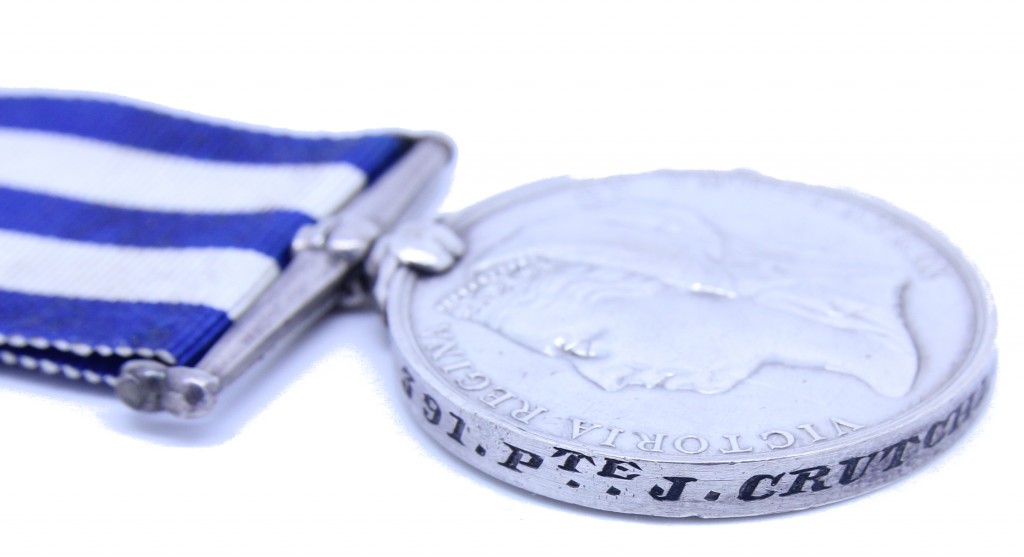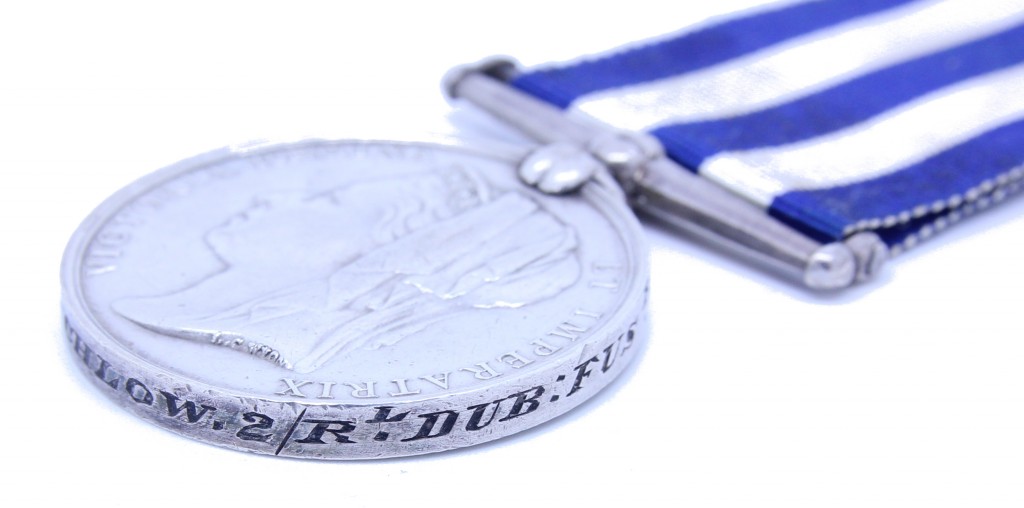The Egypt Medal (1882-1889) is the scarcest campaign medal issued to the Royal Dublin Fusiliers and also the first issued to the regiment following their establishment as a result of the 1881 Childers Reforms. The Egypt Medal shows a bust of Queen Victoria on its obverse while the reverse bears an image of the Sphinx beneath the word Egypt. The medal ribbon has five equal blue and white stripes representing the Blue and White Nile tributaries. The Egpyt Medal was issued for service during and after the Anglo-Egyptian War which was caused by army mutinies and an anti-European uprising in 1882. Just 3 officers and 7 other ranks of the Royal Dublin Fusiliers were awarded this medal.
This small number can be split into three groups the first of comprising of five men awarded the medal for service during the Upper Nile Expedition between 30 November 1885 and 11 January 1886 while attached to another unit. All five were members of the 2nd Battalion. The small group was led by Captain Charles Coningham, who later commanded the 2nd Battalion Worcestershire Regiment and was killed during the Anglo-Boer War and Lieutenant Richard Stewart Gage. The second group comprises of four Sergeants who were awarded the medal with the additional clasp ‘Suakin 1884’ and who served at Suakin between 1 March and 14 May 1885. Finally Lieutenant Colonel William Cleland who would later command the 1st Battalion Royal Dublin Fusiliers was also awarded the medal for his services while attached from the regiment as Chief of Police in Alexandria during the war.

The Egypt Medal awarded to James Crutchlow from Bedworth, Warwickshire, England. He enlisted at Derby in October 1881 aged 21 and transferred to the Royal Dublin Fusiliers in February 1882. Crutchlow served in Egypt from February 1885 to February 1886. He was discharged on 11 October 1893 and returned home to work as a coal miner.

Example of the style of official naming used on Egypt Medals issued to the Royal Dublin Fusiliers
Full list of members of the Royal Dublin Fusiliers entitled to the Egypt Medal
| Number | Rank | Name | Clasp Suakin 1884 |
| Lieut. Col. | William Cleland | NO | |
| Captain | Charles Coningham | NO | |
| Lieutenant | Richard S. Gage | NO | |
| 998 | Sergeant | Thomas Connolly | YES |
| 391 | Private | James Crutchlow | NO |
| 1093 | Sergeant | Martin Hughes | YES |
| 2238 | Sergeant | Samuel Johnston | YES |
| 403 | Private | Tom Sharpe | NO |
| 2312 | Sergeant | James Shea | YES |
| 2847 | Private | Patrick Tracey | NO |





